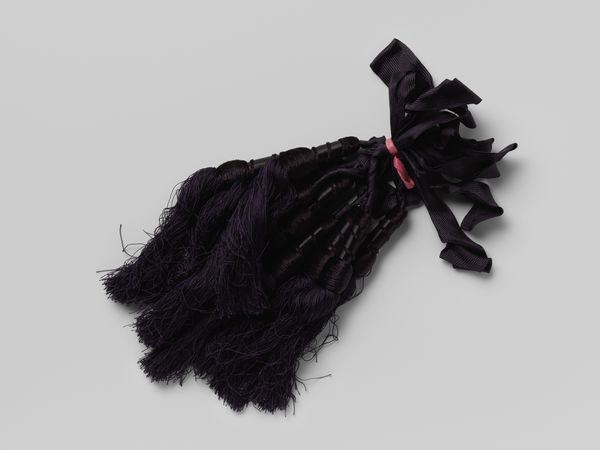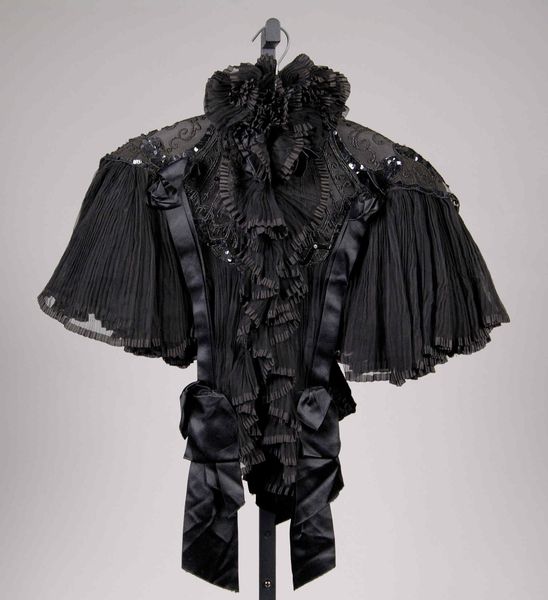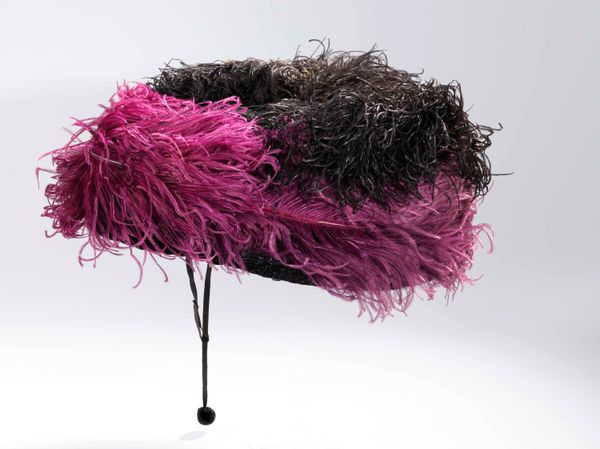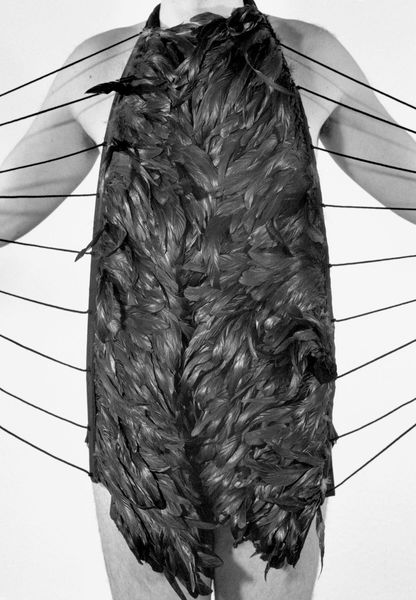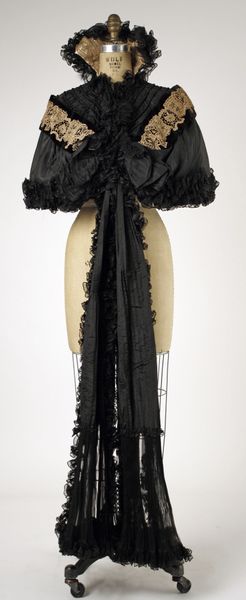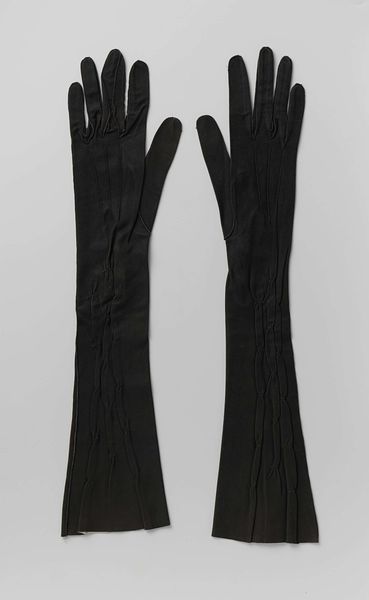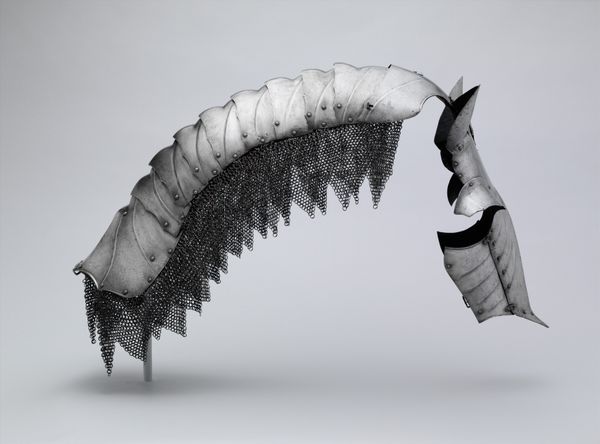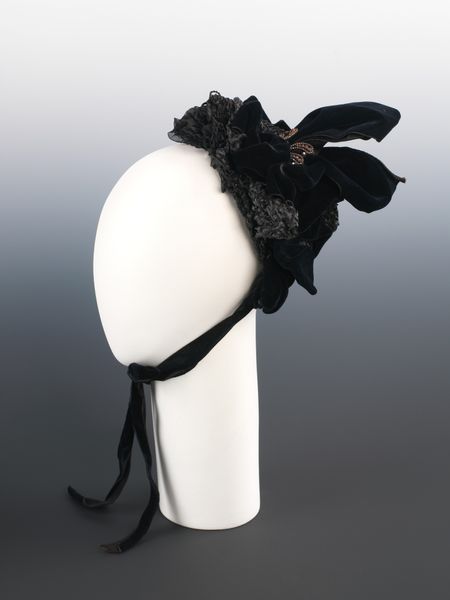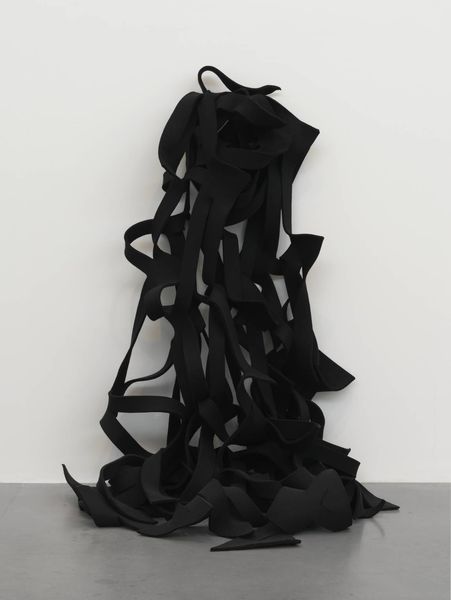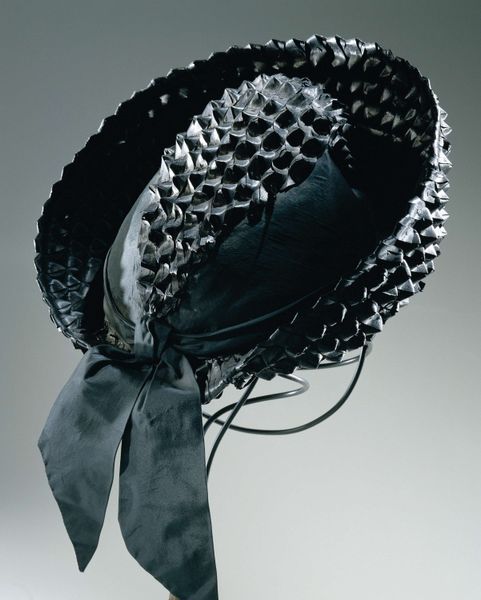
mixed-media, performance, assemblage, found-object, sculpture, installation-art
#
mixed-media
#
performance
#
assemblage
#
sculpture
#
found-object
#
feminist-art
#
sculpture
#
installation-art
Copyright: Rebecca Horn,Fair Use
Curator: Ah, Rebecca Horn's "Cockfeather Mask" from 1973. An early piece from her performance art explorations, really. It's mixed media: feathers, fabric straps, and a supporting structure. A fascinating example of assemblage. Editor: It's imposing, isn’t it? Like a dark, feathery shield for the face. All that dense black...it almost swallows you whole just looking at it. I feel a mix of vulnerability and, dare I say, primal power emanating from it. Curator: Right. In the early '70s, Horn was deeply concerned with the constraints placed upon the body, especially women's bodies, by societal expectations. These wearable sculptures…they weren’t just costumes, they were tools to explore and often subvert those boundaries. Editor: A tool indeed! It seems both protective and restrictive simultaneously. Like you could hide behind it, become anonymous, or conversely, it could trap you, the feathers like an overwhelming cage. And those straps! They appear both binding and somehow…suggestive? Curator: That's key. The work directly engages with Feminist Art's concerns of the era. The phallic connotations of the “cockfeather,” clashed against the obscuring of the wearer's identity… It's a complex conversation about masculine and feminine roles and how they constrict individual expression. Editor: There is something almost bird-like and vulnerable in its composition too, perhaps that's the empathy kicking in. But looking at the feathers up close in the image makes me imagine the sensory experience… the rustling, the weight. Performance transformed into sculpture, really. How did audiences at the time react, do you think? Curator: Certainly with strong emotions. The performances involving this piece often incorporated movement, sound, and interaction with the surrounding space. Some were thrilled by the blurring of human and animal, the liberation of identity, while others found it unsettling, confrontational. Editor: I suppose that’s art doing its job! The piece still challenges me now, decades later. What did you hope for viewers to consider, encountering it today, Dr. Ellis? Curator: How the art continues to perform a role of the power dynamics in play throughout the artwork on identity and body, even when it stands silent in a gallery. How history continues to have a point and how our perception and engagement with an object changes it. Editor: A darkly beautiful statement, ready for someone else to find an element of themselves and connect with something hidden. Thank you for unpacking that for me!
Comments
No comments
Be the first to comment and join the conversation on the ultimate creative platform.
